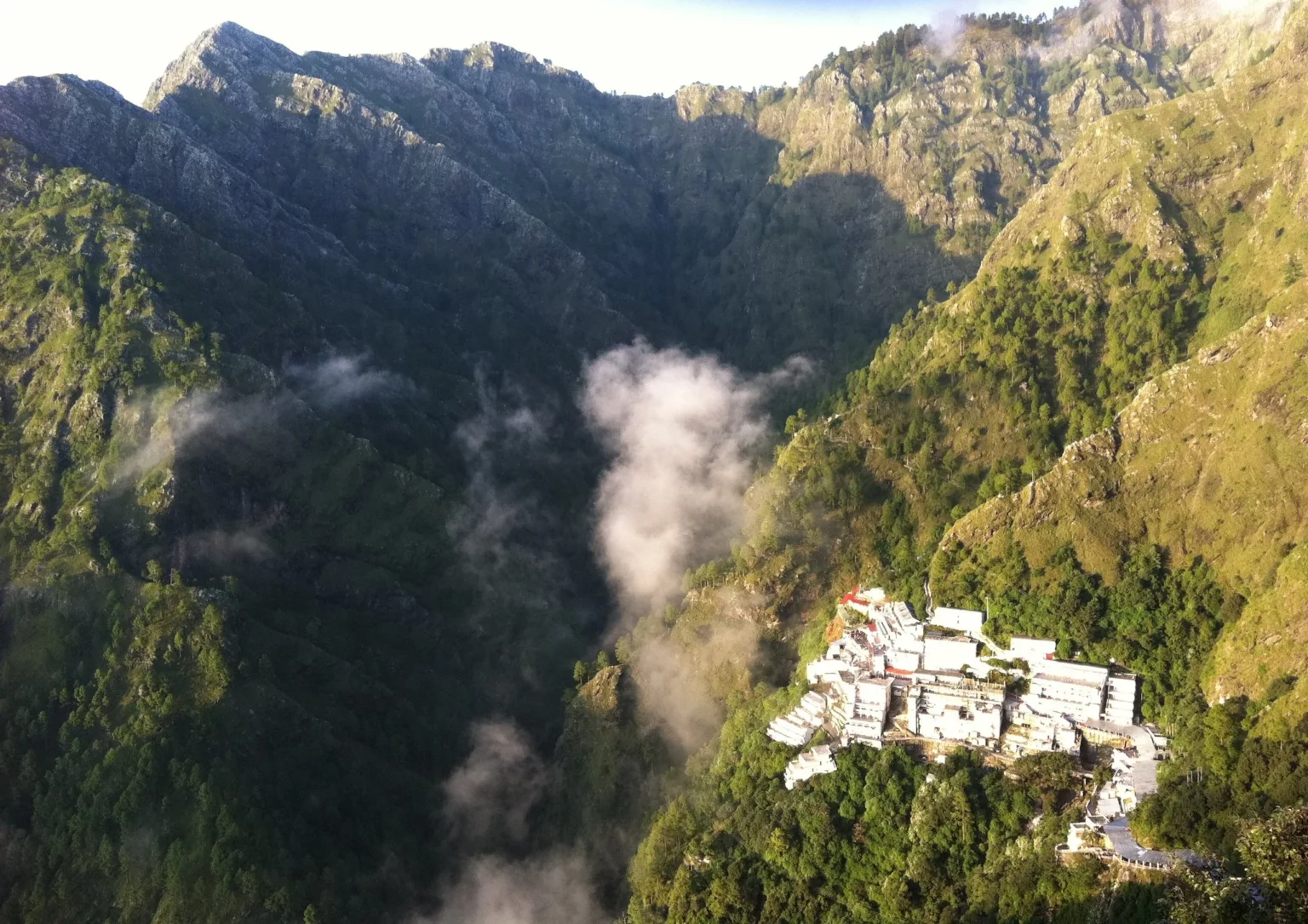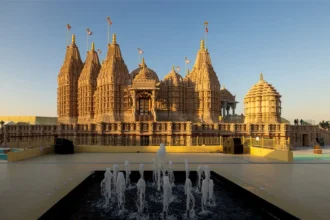Perched amidst the serene Trikuta Mountains near Katra in Jammu & Kashmir, the Shri Mata Vaishno Devi Temple, also known as Vaishno Devi Bhavan, is one of India’s most sacred shrines.
With three natural stone formations, called pindis, representing Mahakali, Mahalakshmi, and Mahasaraswati, the temple draws millions seeking blessings, peace, and spiritual awakening each year.
At an elevation of about 5,200 feet (1,584 meters), it is revered as a Shakti Pitha, a site of ultimate divine feminine power.
Origins, Myth & Spiritual Significance
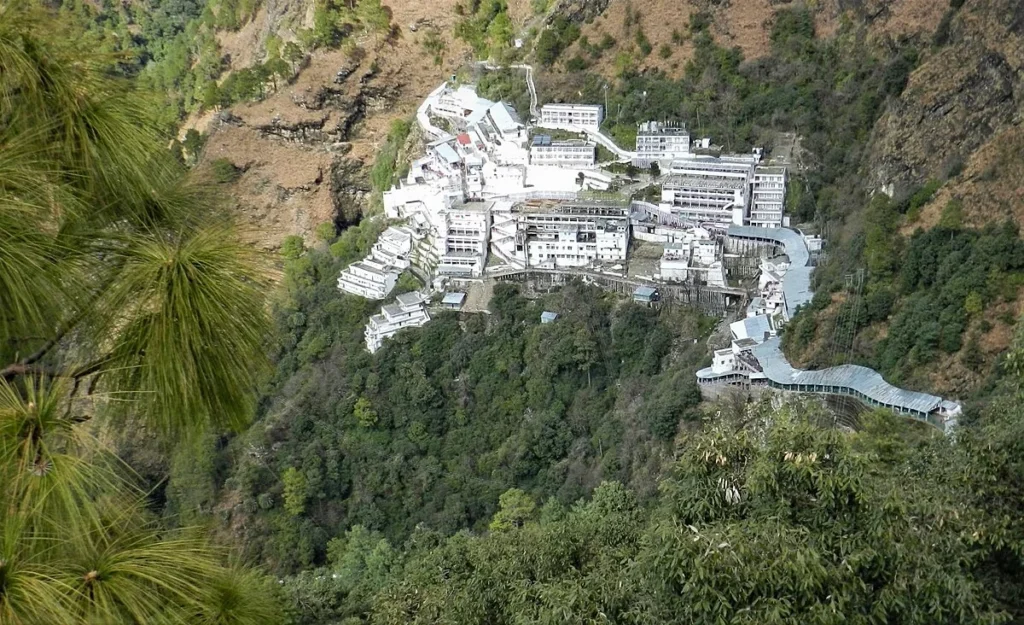
The Story of Pandit Sridhar
Legend traces the temple’s origin to Pandit Sridhar of Hansali village. He had no wealth but abundant devotion. One night the goddess appeared in his dream and asked him to host a Bhandara a sacred feast.
Though he had no means to feed people he obeyed. The goddess disguised herself as a little girl helped him miraculously arrange the food and served it to thousands.
When she disappeared Sridhar fasted and prayed until she again appeared in his dream and guided him to the cave in the Trikuta Hills.
Pandit Sridhar discovered the cave following her guidance and became its first custodian; his descendants still perform rituals there today. These are the three pindis now worshipped by millions every year.
The shrine is also tied to the epic story of Arjuna, who is believed to have prayed at the site before the Kurukshetra war.
A darker legend tells of Bhairon Nath, a tantric pursuing Vaishno Devi. She thwarted him in full divine fury, and pilgrims now offer prayers at Bhairon Temple, situated about 1.5 km from the cave, symbolizing the victory of good over evil.
The Cave Shrine & Sacred Rituals
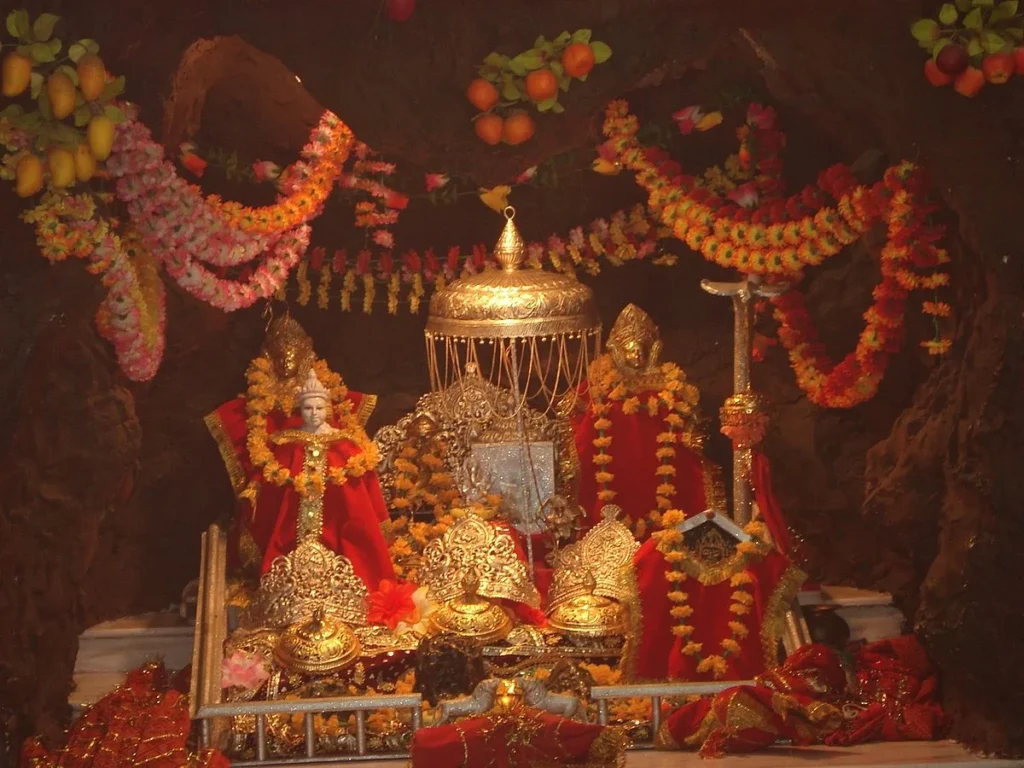
The holy cave housing the three pindis extends for about 30 meters inside Trikuta Hills. Each pindi is a natural rock formation, revered as an incarnation of a goddess: Kali, Lakshmi, and Saraswati.
Pilgrims wash their feet with water from Ban Ganga, a spring they refill in the valley, symbolizing purification before entering the cave.
When you enter the sanctum, focus falls on these pindis; chanting or overt praise inside the cave is discouraged to preserve silence and harmony.
Timings & Festivals
The temple is open 24 hours daily, with darshan permitted at all times.
The main aarti is conducted twice daily in the morning and evening. The morning aarti starts at around five while the evening aarti takes place around seven.
Pilgrims are not allowed in the main cave during the aarti as it is considered the time when the goddess is being worshipped privately by her priests. The aarti is a beautiful and spiritually charged experience with chants incense bells and lights filling the air.
Major celebrations include Navaratri in September–October, accompanied by a prolonged Shat Chandi Maha Yagya, and Diwali, both drawing massive pilgrim crowds.
Getting There: Routes and Altitude
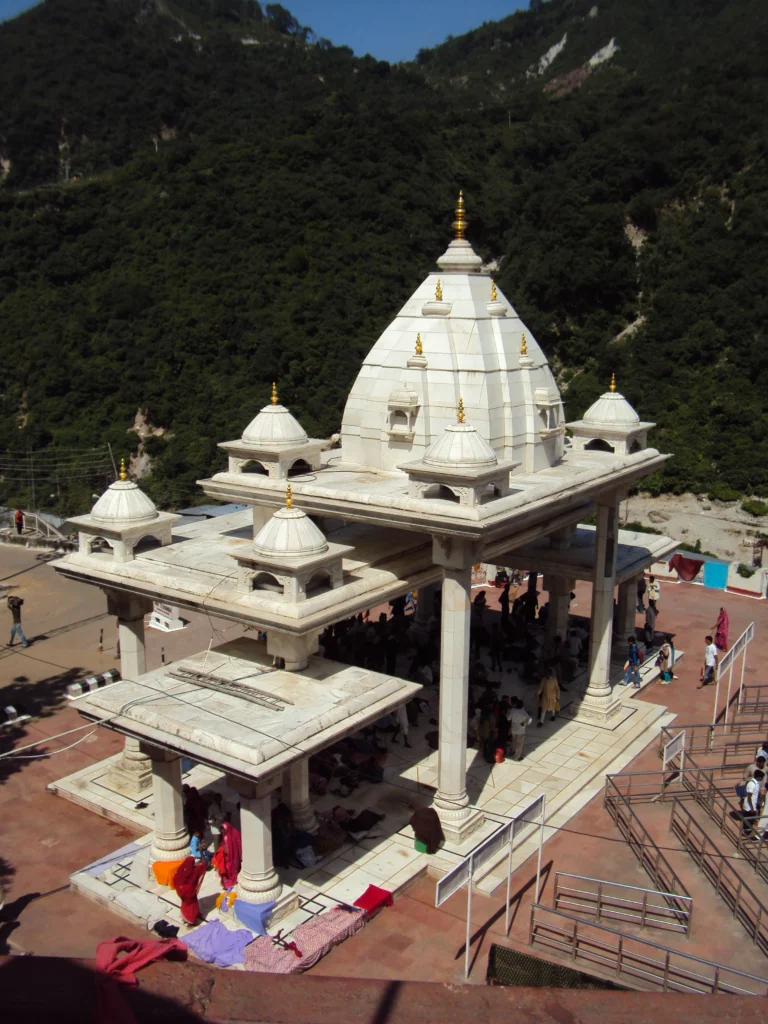
Katra serves as the base town, about 60 km from Jammu or 50 km from the Jammu airport or railway station. The new SMVD Katra Railway Station provides modern facilities including escalators, VIP lounges, parking, and retiring rooms.
In June 2025, India’s first Srinagar–Katra Vande Bharat Express launched, covering 189 km in just over three hours.
Undertaking the Pilgrimage (Yatra)

From Katra, the shrine is 12–13 km uphill on well-constructed, paved paths, lined with resting places, food stalls, and medical aid posts. Most pilgrims walk the route in 4–6 hours, chanting “Jai Mata Di!” with strangers turned fellow pilgrims providing motivation.
Alternative transport includes battery-operated vehicles, ponies, and palkis (palanquins) for elderly or infirm devotees, with regulated rates by SMVDSB.
Helicopter service runs up to Sanjichhat, about 2.5 km from the Bhawan, available through online booking making travel accessible and efficient.
The Vaishno Devi ropeway, located at Bhawan, connects to Bhairon Nath Mandir in just 5–6 minutes, saving nearly an hour of trekking. Operating daily from 9 AM to 5 PM, tickets cost around ₹100 per person.
It’s a safe and efficient option, especially for elderly pilgrims. Since launching in 2018, it’s seen smooth operations, though larger expansion plans have faced protests from locals over job concerns and environmental issues. Despite this, the ropeway remains a popular, reliable way to complete the spiritual journey.
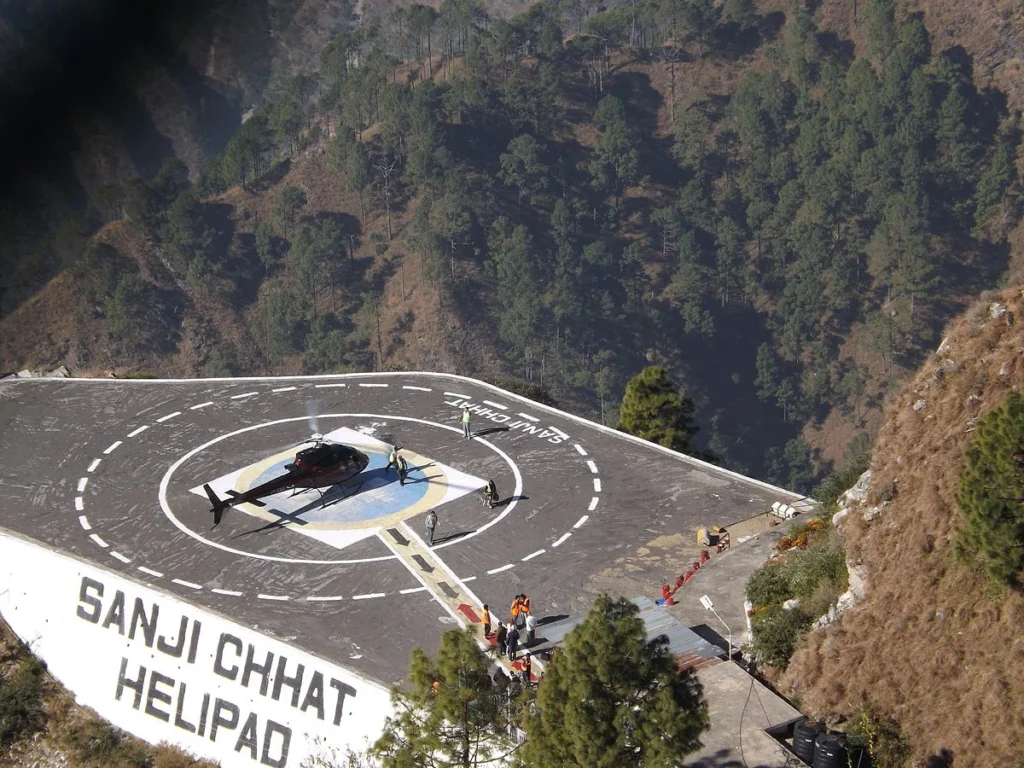
Facilities & Government Services
Managed by the Shri Mata Vaishno Devi Shrine Board (SMVDSB) since 1986, the shrine board ensures pilgrim comfort with amenities across Katra and Trikuta Hills :
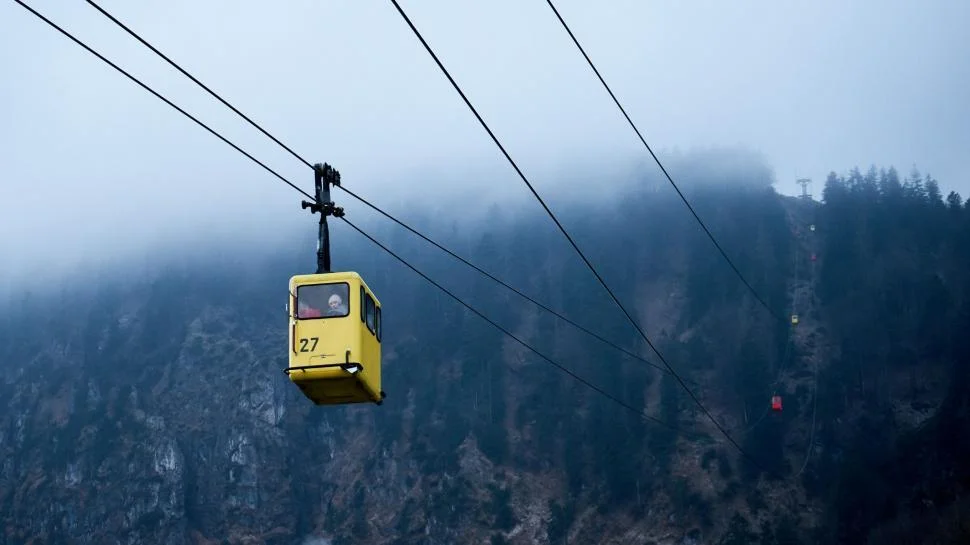
- Clean water, toilets, resting shelters, and medical clinics at Banganga, Adhkuwari, Sanjichhat, and Bhawan.
- Accommodation in guesthouses such as Niharika Yatri Niwas and Shakti Bhawan, dharamshalas in Katra and near the Bhawan, and dormitories like Trikuta Bhawan. Online booking is available via SMVDSB website.
- Medical care includes a charitable hospital in Katra with 24-hour dispensary and ICU, along the trek and at key points like Sanjichhat and Bhawan.
- Cloak rooms and deposit lockers at Katra and Bhawan to store footwear and belongings since cameras and mobile phones are not permitted inside the cave.
Unheard Mythological Beliefs and Miracles of Vaishno Devi Temple
The Magical Stream That Emerged from an Arrow
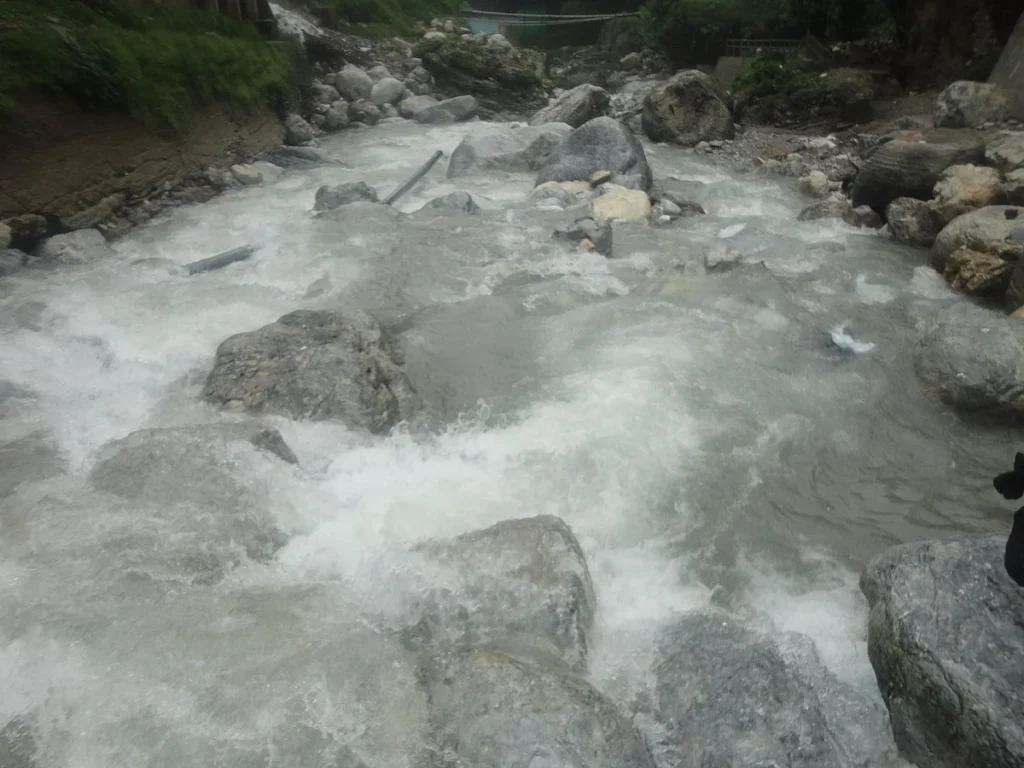
As the goddess fled from Bhairon Nath who pursued her with impure intentions she stopped for a moment feeling thirsty. She drew an arrow from her quiver and shot it into the ground. From that spot a clear stream burst forth.
This stream still flows today and is called Banganga. Devotees wash their hands and feet here before beginning the climb as it is believed to purify both the body and the soul.
The Cave of Womb and the Blessing of Fertility
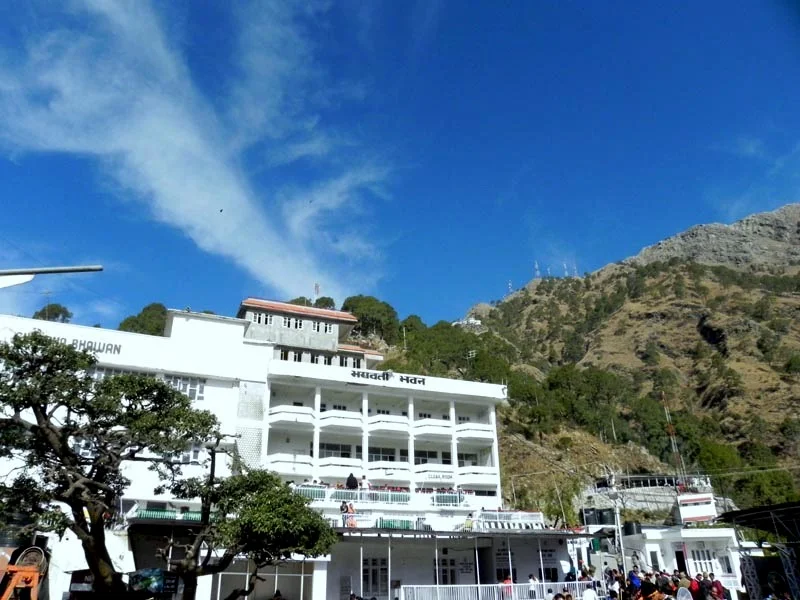
Halfway up to the main shrine lies the sacred cave of Ardhkuwari. It is believed that the goddess stayed in this cave for nine months in a womb like meditation before proceeding to the final cave.
The place is known as Garbhjun and women who are seeking blessings for childbirth come here to pray. Many claim to have conceived after visiting this sacred place and walking through the narrow cave which symbolizes rebirth and divine grace.
Real Life Miracles Experienced by Devotees
There are countless stories shared by ordinary people whose lives changed after a visit to the shrine. Some tell of physical ailments disappearing overnight after a visit.
A woman from southern India who had been trying to conceive for seven years became pregnant after doing the parikrama during Navaratri.
Another elderly man who had been partially paralyzed claimed that after crawling the last few hundred steps to the shrine he stood up unaided with tears in his eyes.
Many pilgrims also talk about visions of the goddess during their journey. Some say they were lost in the hills but a mysterious young girl appeared and guided them safely to the path before vanishing.
Devotees believe that such sightings are not coincidences but moments when the goddess takes human form to help her children.
The Unseen Sanctum and Rare Darshan
The inner sanctum of the main cave is usually closed during peak times but on rare occasions when the crowd is small mostly during winters the gates are opened and a direct darshan of the pindis is allowed.
Those who are present during these rare openings describe an overwhelming peace and energy in the air. Many say they felt a powerful force as if the goddess herself was watching over them.
Sacred Test of Devotion on the Path
There is a narrow rock crevice near the route where only those with sincere hearts are believed to pass through easily. It is said that the rock widens for the pure in heart and tightens for those burdened with lies or malice.
While science may call this superstition the pilgrims who experience it walk away with changed hearts and deeper faith.
Redemption of Bhairon Nath
The story of Bhairon Nath adds another layer to the spiritual teachings of Vaishno Devi. Although he chased the goddess with impure thoughts she ultimately forgave him. After slaying him she granted him salvation and blessed him with a temple of his own near the shrine.
Pilgrims complete their journey only after visiting the Bhairon Nath temple. This represents the goddess’s power to forgive and guide even the most lost soul towards light.
The Enchanted Prasad and Its Preparation
The temple’s prasad consists of dry fruits nuts sweets and the sacred chunari. It is prepared under strict supervision in a separate sanctum within the temple complex.
No chemicals or additives are used and everything is offered first to the goddess before being distributed. It is said that the prasad has healing powers and many pilgrims carry it back to distribute among friends and family as a token of divine blessing.
Lesser-Known Insights
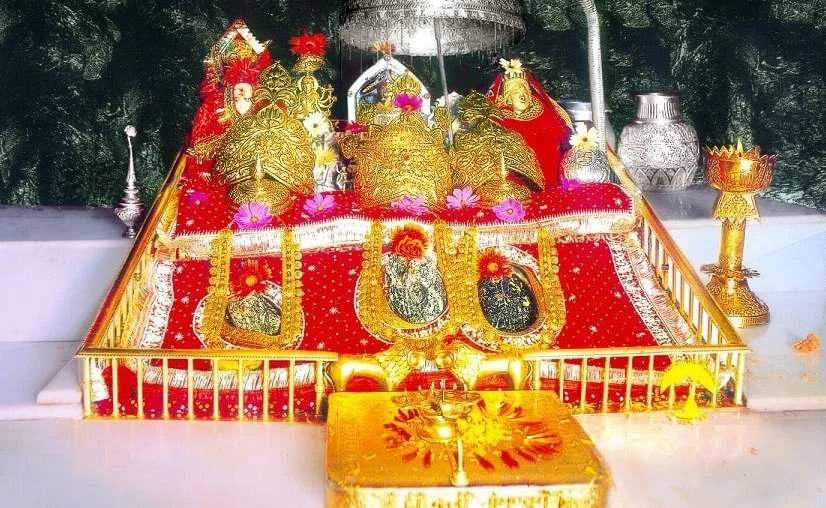
- A secret alternative trekking route spanning 7 km was inaugurated in 2018 to manage pilgrim flow, built at a cost of ₹80 crore.
- Volunteers and many Reddit users describe the pilgrimage as transformative: one wrote, “Once you spot the Bhawan at the trek’s end, all exhaustion vanishes”.
- The shrine was honored as India’s most iconic clean reputation site under Swachh Iconic Places in 2019.
Spiritual Thread & Pilgrims’ Faith
Vaishno Devi is not viewed simply as a goddess; she is Tri-Devi—Durga, Lakshmi, and Saraswati in one. Called Trikuta Devi, she is believed to await Lord Vishnu’s avatar in Kali Yuga.
Pilgrims pray that worshipping her brings life fulfillment, prosperity, and peace. Many devotees believe a darshan with a vow (mannat) here has miraculous power to transform lives.
Summary Table
| Topic | Highlights |
|---|---|
| Location & Elevation | Trikuta Hills near Katra; around 5,200 ft above sea level |
| Three Goddesses | Natural stone pindis representing Kali, Lakshmi, and Saraswati |
| Pilgrimage Route | 12‑13 km uphill trek; alternatives: pony, palki, battery vehicles, helicopter |
| Registration | Yatra slip required; available online or at Katra counter |
| Facilities | Medical clinics, clean water, cloak rooms, guesthouses, dharamshalas |
| Key Festivals | Navaratri & Diwali with Maha Yagya and special pujas |
| Aarti Timing | Twice daily between 6:20 – 8:00 am/pm |
Final Reflection
Vaishno Devi Temple is more than rock and ritual, it is a journey of faith, endurance, and spiritual unity. Within the quiet cave the pindis rest, and outside, pilgrims call out “Jai Mata Di!” with heartfelt devotion.
The path up Trikuta is challenging, but every step has purpose. It leads to the Divine Mother who, legend says, waits at the summit in timeless grace.
Some believe they are walking to see the goddess. But in truth it is often the goddess who is calling them.

